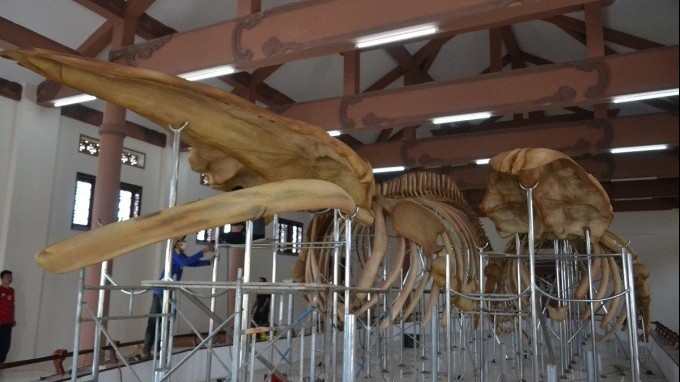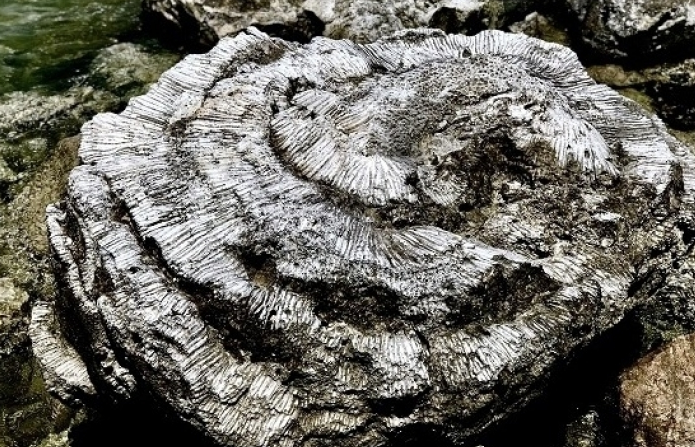
Unique coral reef found on Ly Son
Latest
L
| TIN LIÊN QUAN | |
| Ly Son – paradise in the middle of the sea | |
| Quang Ngai seeks measures for sustainable tourism on Ly Son island | |
Dr Nguyen Xuan Nam from the institute said that a group of researchers and scientists found the population of palaeontological coral reefs over an area of 20,000sq.m extending 400 metres along the coast, northeast of the island.
The coral reef complex, which was named Coi Xay (a manual rice mill seen in rural areas in the old days) coral, includes a heap of coral blocks scattered on the beach.
“It’s an amazing discovery. We haven’t found such a coral reef complex in Vietnam before. It’s like manual rice mills dotted along the beach”, Nam said.
“The discovery of this strange coral population helps explain the palaeontological environment during the Flandrian transgression, creating an attraction for tourists, researchers and paleontologists”, he said.
Nam said the discovery was part of initial research to recognise Ly Son Island as a global geo-park.
 |
| Part of the fossilised reef complex on a beach of Ly Son Island, off the coast of Quang Ngai province. (Photo courtesy of Nguyen Xuan Nam) |
He warned the province should enact special protection for the coral reef complex, as well as the islands, to prevent them being destroyed by human activities and overloaded with tourism and construction.
He said some residents did not know the importance of the reefs, and they even took parts of the coral to use in farming.
Samples of the coral reefs have been sent for examination at international laboratories to establish their age and structure as well as scientific name.
In response to a warning by scientists from the institute, the central province people’s committee released an urgent decision to protect the population of newly found coral reefs, banning all construction and approaches or human activities in the area.
According to archaeologists, Ly Son Island is a dormant volcano. The terrain of the island was created from eruptions 25 to 30 million years ago, leaving landscapes with rocks, caves, cliffs, rock arches and a lake.
The island has abundant relics related to the Sa Huynh, Champa and Dai Viet (or Great Viet) cultures that existed on the island for thousands of years, according to Dr Pham Quoc Quan, a member of the National Heritage Council.
Quan said ceramic fragments and other antiquities from archaeological excavations revealed the first community living on the island belonged to the Sa Huynh culture between 2,500 and 3,000 years ago,
Geologist Vu Cao Minh warned that exploitation of beach sand and coral reefs for farming garlic and onions could result in damage to coral reefs around the island, while the boom in hospitality services could lead to a mass collapse of the underground water structure of the island.
Scientists also warned the province about a proposal to develop a hotel and resort complex because it would damage the heritage of the island.
The islands and a vast coastal area of Binh Son district are being considered as a site for a Global Geo-Park for approval by UNESCO.
The island, known as the "King of Garlic" in Vietnam, is a tranquil destination with 21,000 inhabitants, most of whom make their living from farming garlic and spring onions and fishing.
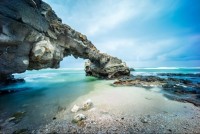 | More efforts needed to preserve biodiversity on Ly Son Island Destructive human activities have put coral reefs, sea grass beds and many other marine species off Ly Son Island at risk, with local authorities urged ... |
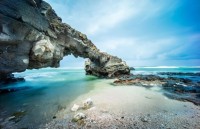 | Quang Ngai seeks measures for sustainable tourism on Ly Son island Tourism experts, representatives from 120 travel agencies and local authorities gathered at a workshop in the central province of Quang Ngai on August 30 to ... |
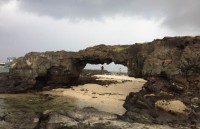 | Hang Pagoda on Ly Son Island Ly Son is one of the most beautiful islands in Quang Ngai Province. Blessed by nature, the island has several scenic spots. |




